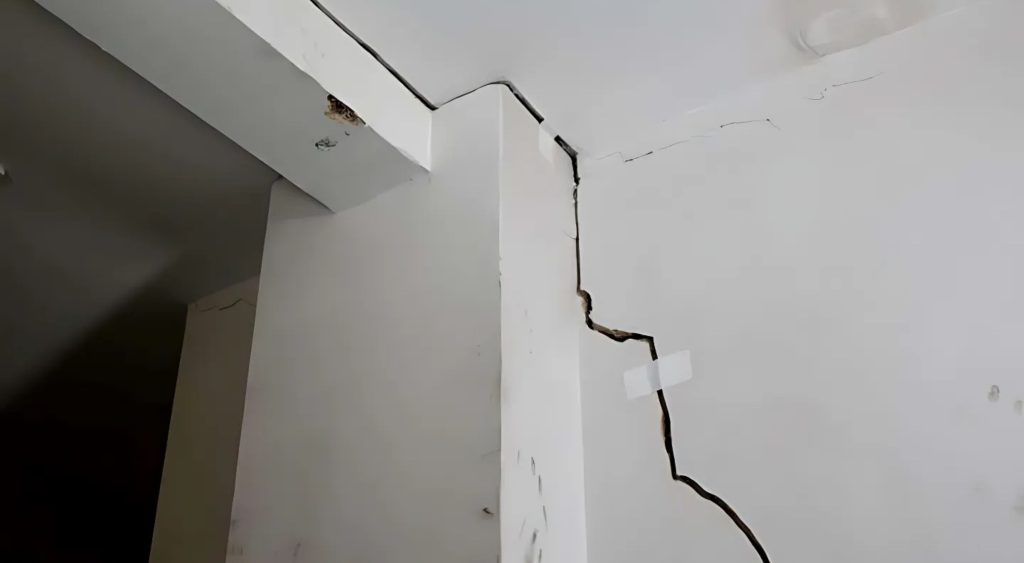Facilities managers and commercial property occupiers are being urged to stay alert for symptoms of substructural issues, such as subsidence, as temperatures continue to rise this summer.
In its most recent report, the MET Office shared that June 2025 was the warmest on record for England and the second warmest since records began in 1884 for the UK. This news follows an unprecedented spring that was the sunniest and driest on record. Across the season we saw just 128.2mm of rainfall, compared to 303.1mm in Spring 2024.
In its previous three-month weather report, the MET Office revealed that the UK is more than twice as likely to experience a hotter-than-normal summer this year, with an increased chance of heatwaves. If temperatures rise as predicted, experts are warning that excessive drying of the soil in the foundations beneath commercial properties could lead to severe subsidence, sinkholes and erosion.
Subsidence occurs when voids form in the ground beneath a building, causing the foundations to sink and potentially risking damage to infrastructure. In the past 12 months, the UK has seen a rising number of sinkholes forming in roads and under properties, which can be a result of these voids collapsing.
To avoid costly repairs and disruptions, subsidence expert Mainmark UK is urging facilities managers and property occupiers to remain alert to signs of subsidence and take action promptly.
David Hedley, Commercial & Infrastructure Lead at Mainmark UK, comments: “With temperatures expected to skyrocket over the next three months, we need to be considering the wider impact of this weather on commercial properties such as warehouses, office buildings and retail units.
“The majority of subsidence cases reported to us occur after periods of prolonged heat. This tends to be even more common in areas with rich, clay soil, such as London and the South East of England, and is worsening as we get deeper into the climate crisis.
“As moisture evaporates from the ground, soil contracts and shrinks. Over time, this leaves considerable gaps in the ground. Foundations that were once stable can shift in the ground, cracking walls and floors, and warping surfaces.
“Few people are aware of the major effects of subsidence, and any delays in reporting and resolving the issue could be costly and cause extensive delays. We have previously supported with the relevelling of a commercial office building in Milton Keynes, after record summer temperatures started to accelerate subsidence damage to the property.
“Because the problem was reported with urgency, we were able to rectify the issue in just seven days without causing business disruption. If the issue had been allowed to worsen over the years, it could have led to windows and doors becoming unusable due to sticking, severe impact to the employee’s working environment and substantially higher repair costs.
“If caught early, initial subsidence is a quick fix and can be resolved using non-disruptive methods, like resin injection technology. This solution quickly and accurately strengthens structures, fills voids and relevels surfaces, and will futureproof commercial properties from the climate crisis.

What are the symptoms of subsidence?
The most common sign of subsidence is cracks appearing on walls or paving. These cracks often run diagonally and can widen over time, particularly around doors and windows where the building’s structure is most vulnerable to movement.
Other signs include tilting or leaning structures such as walls, fences, or columns, which can occur as the ground beneath them shifts unevenly. This can create visible gaps or cause these structures to move out of alignment.
You may also notice buckled or uneven surfaces. In commercial settings, this can appear as dips or sinking in car parks, loading bays, access roads, or hard landscaping. These indicate ground movement beneath the surface, compromising the site’s stability and posing hazards for vehicles, staff, and visitors.
David adds: “My advice to anyone who spots these symptoms is to take note of them right away and reach out to an expert, who can offer a free on-site visit with a quote. While reporting subsidence issues early might appear as an extra expense, it’s the best step towards safeguarding properties and minimising future costs.”
Mainmark Ground Engineering (UK) Ltd is a subsidiary of the Mainmark group of companies established in 2016, with its headquarters located in Milton Keynes. For over three decades, Mainmark has established itself as a pioneering force in the industry, leading the way in developing and delivering cutting-edge solutions. With an impressive track record of over 200,000 successful projects across Australia, New Zealand, Japan and the UK, Mainmark has earned international recognition as an award-winning ground engineering organisation.


